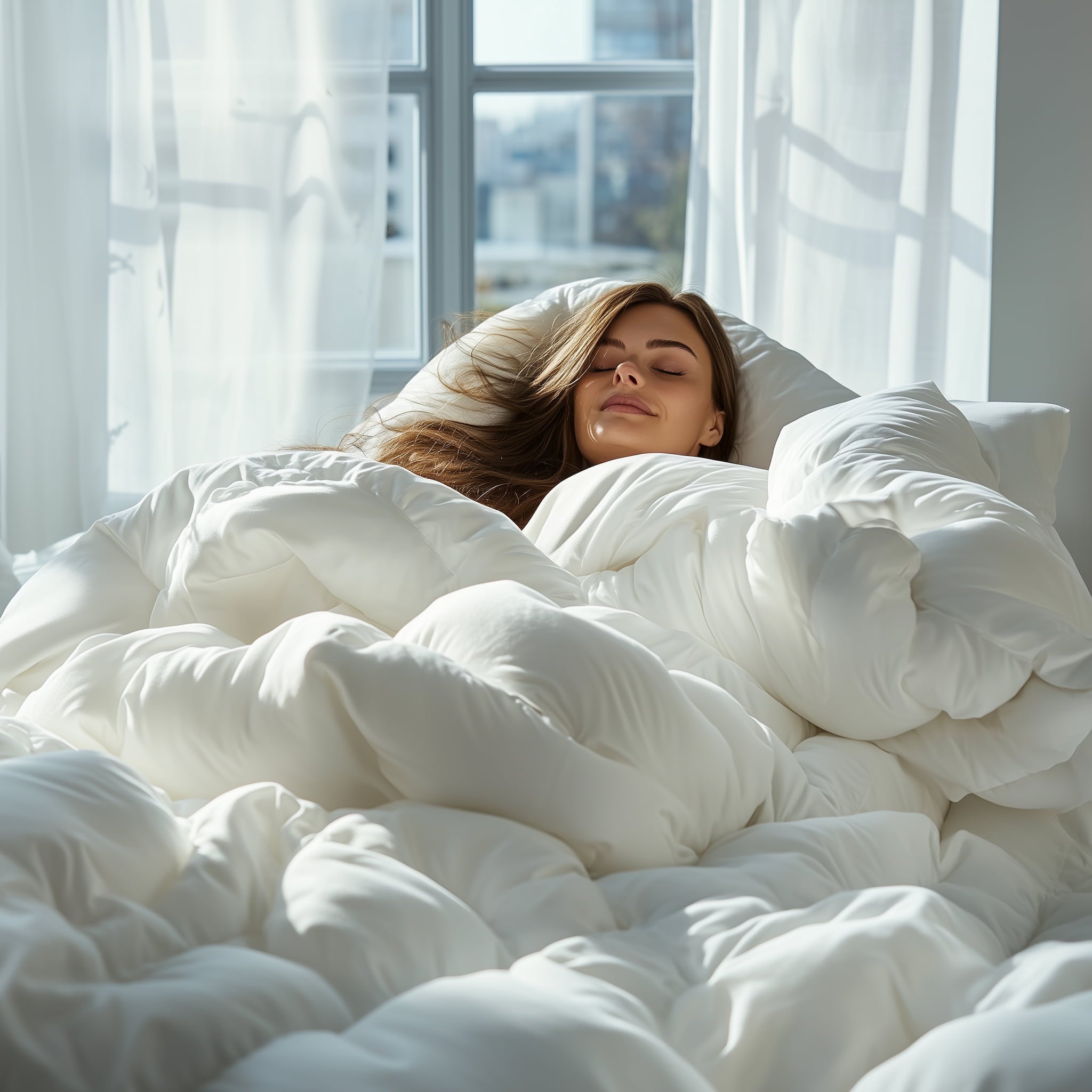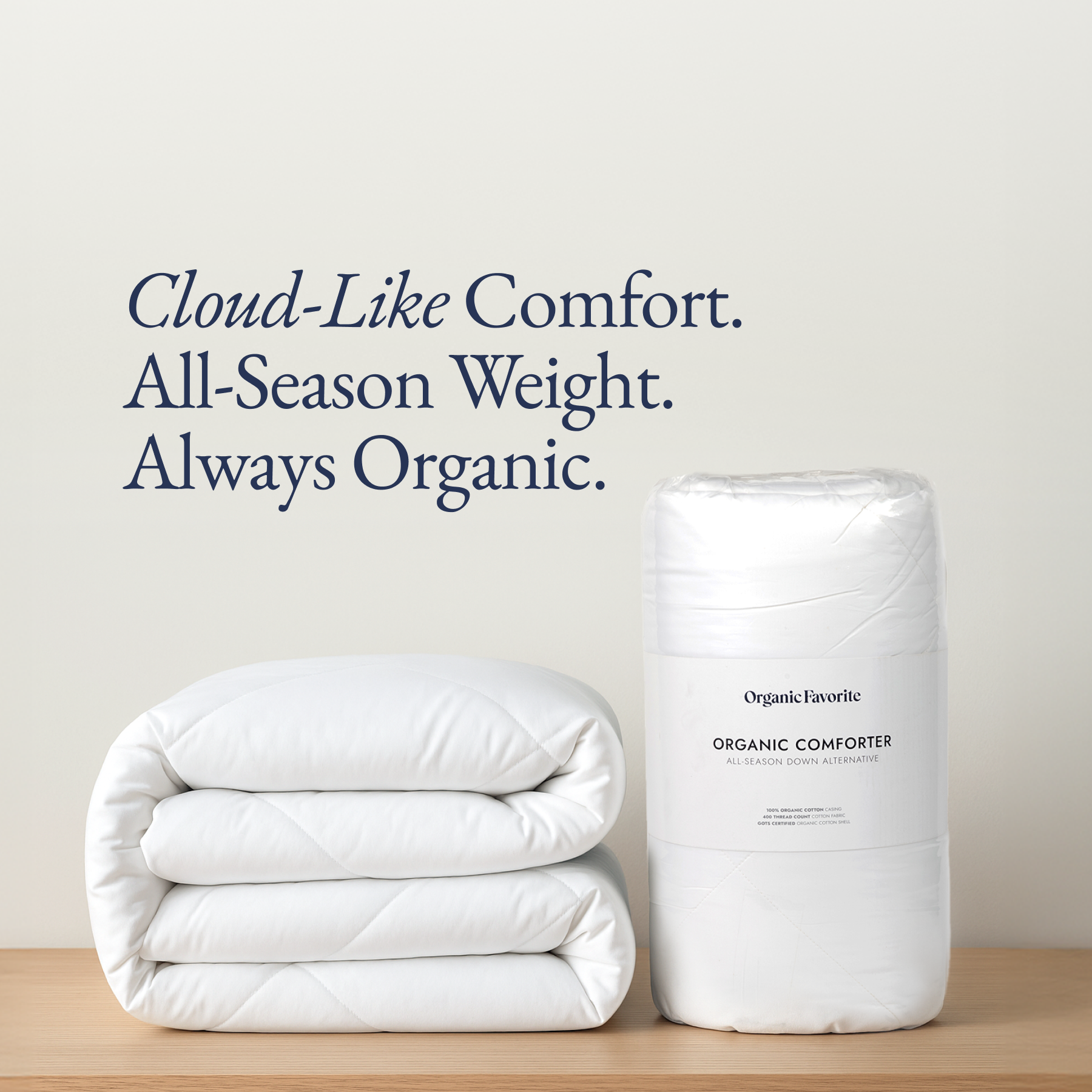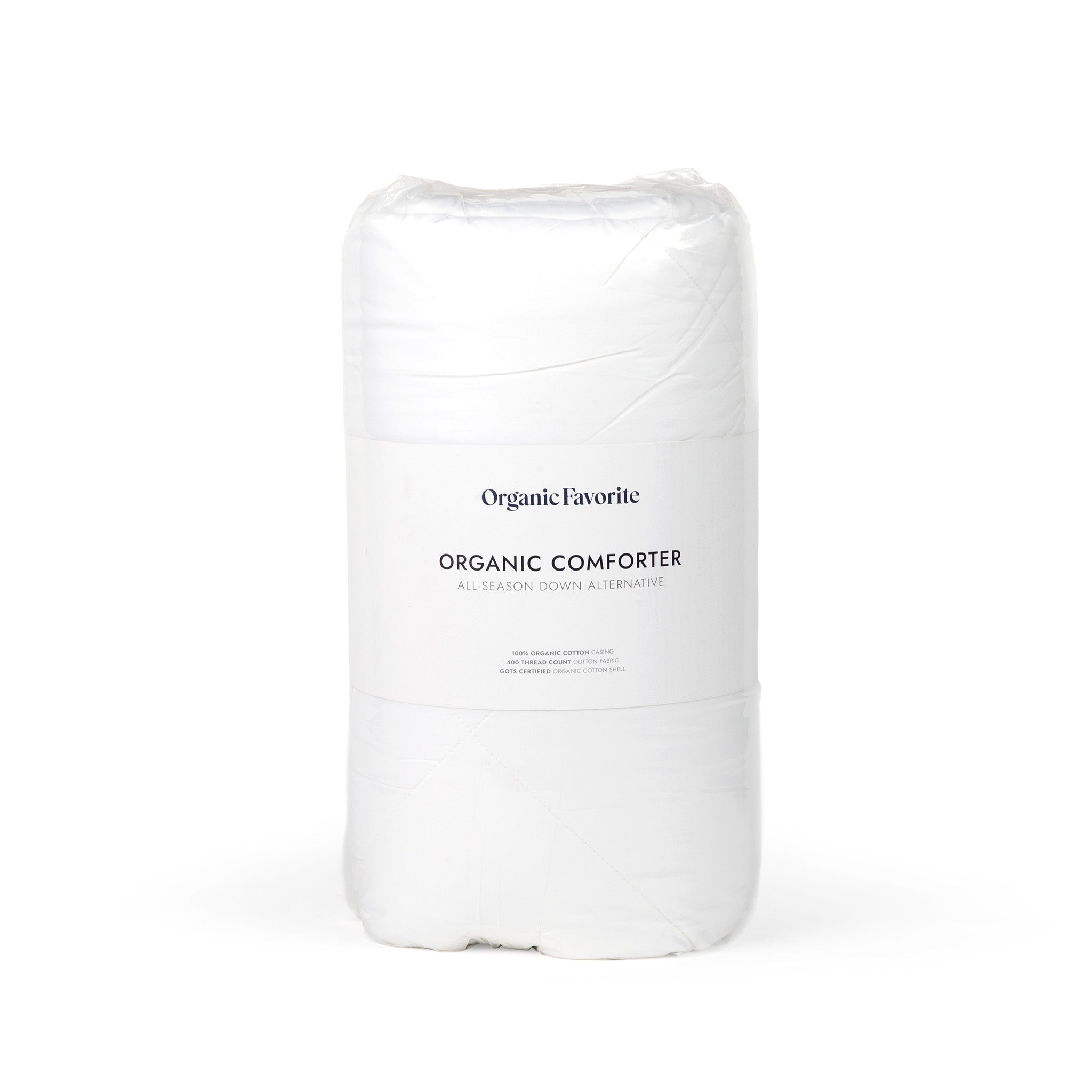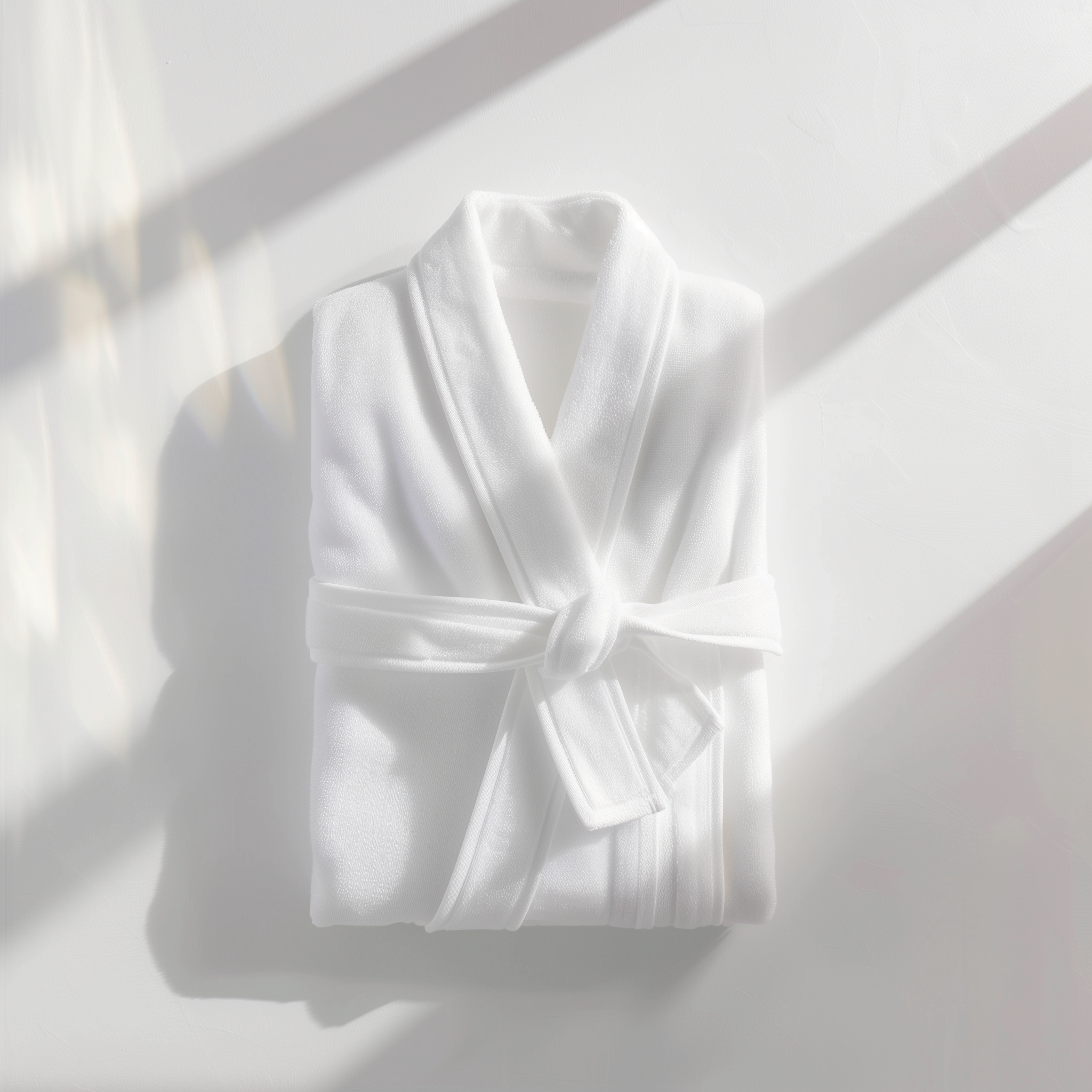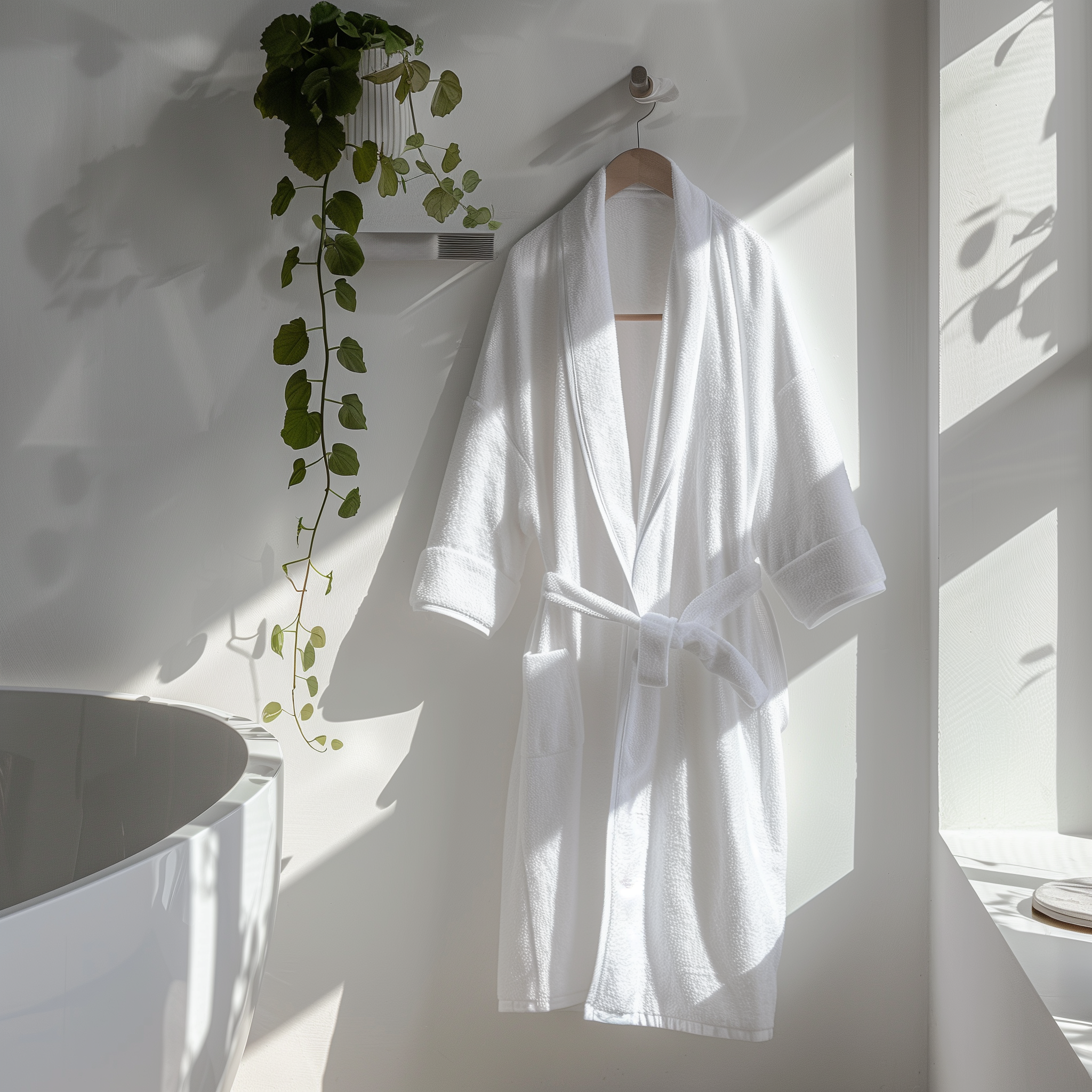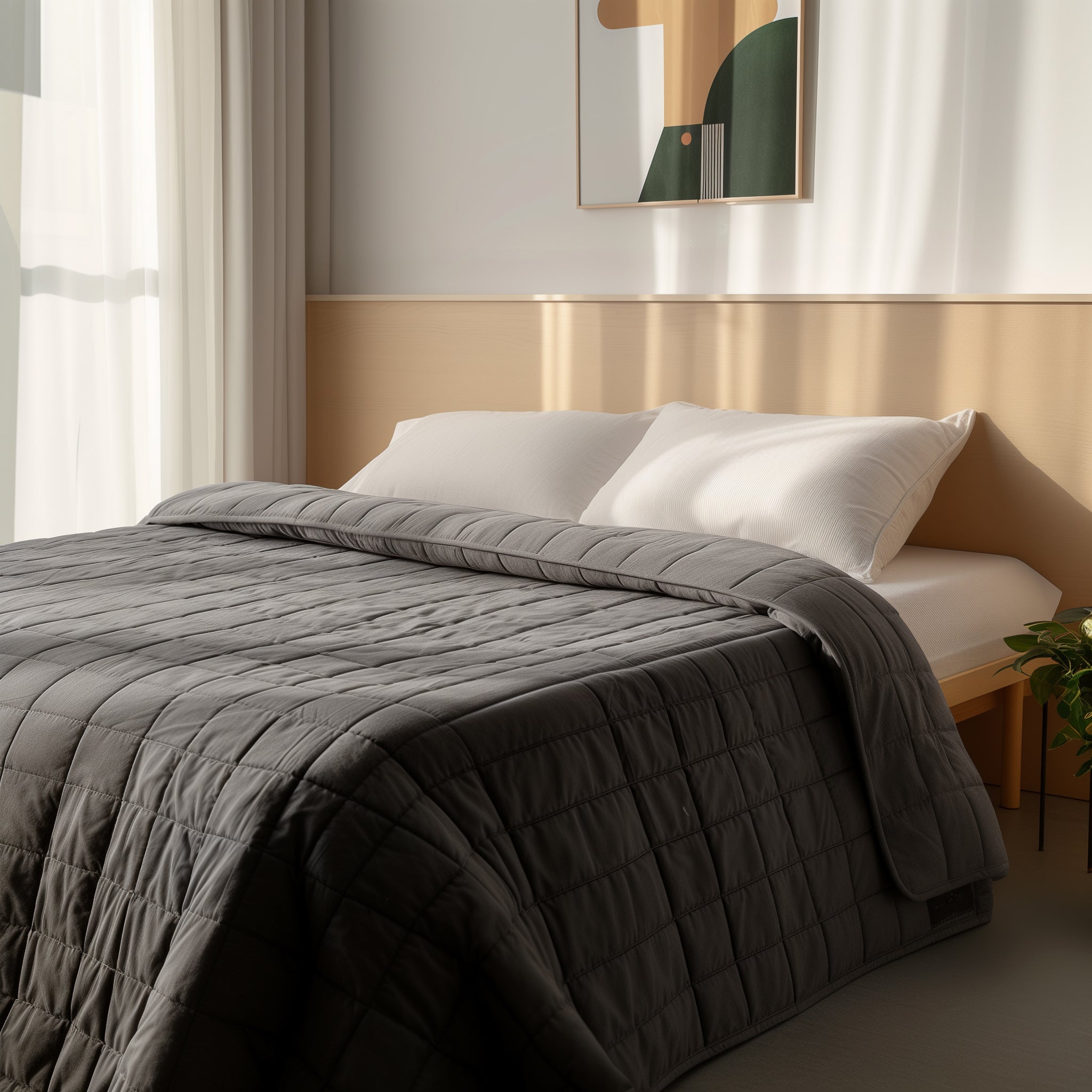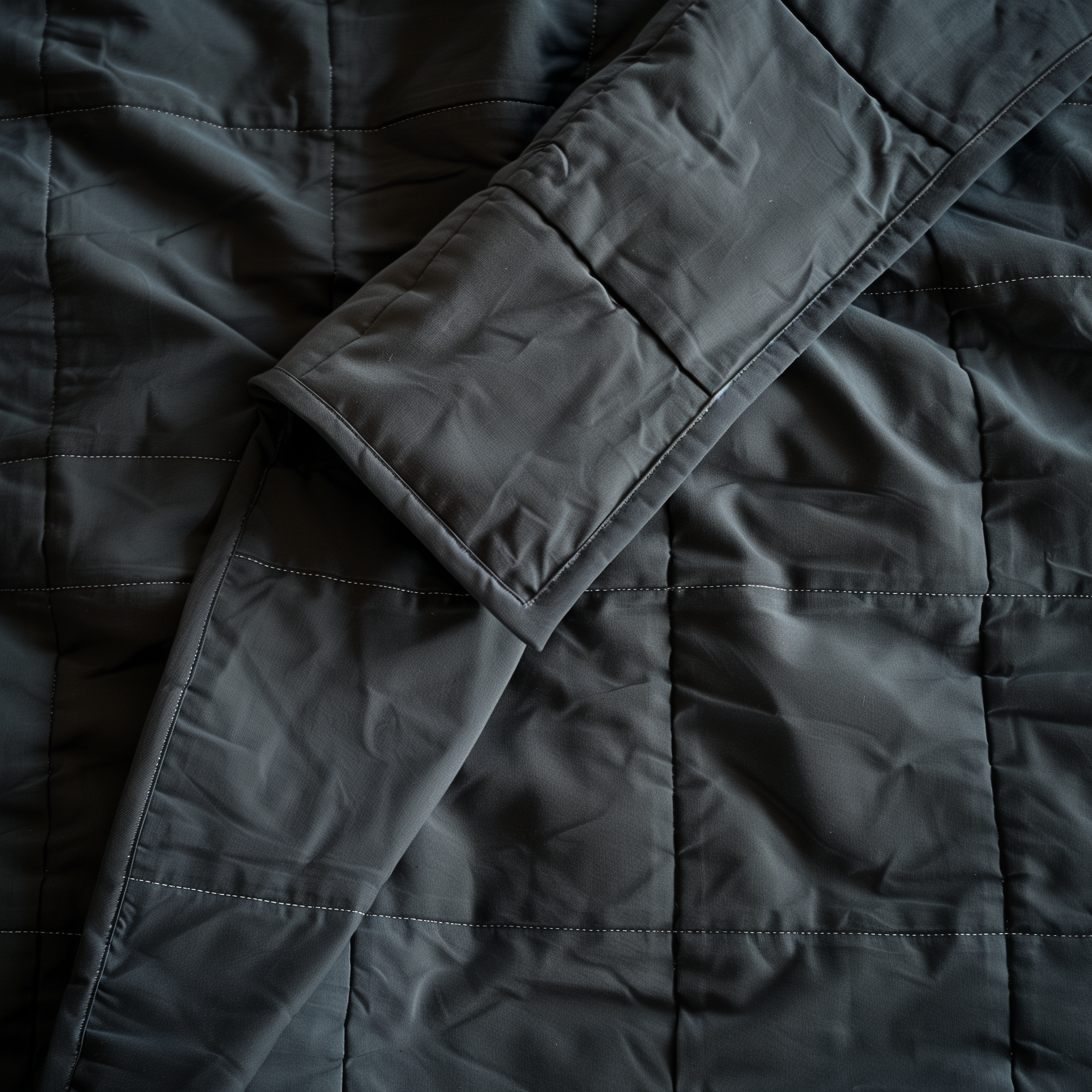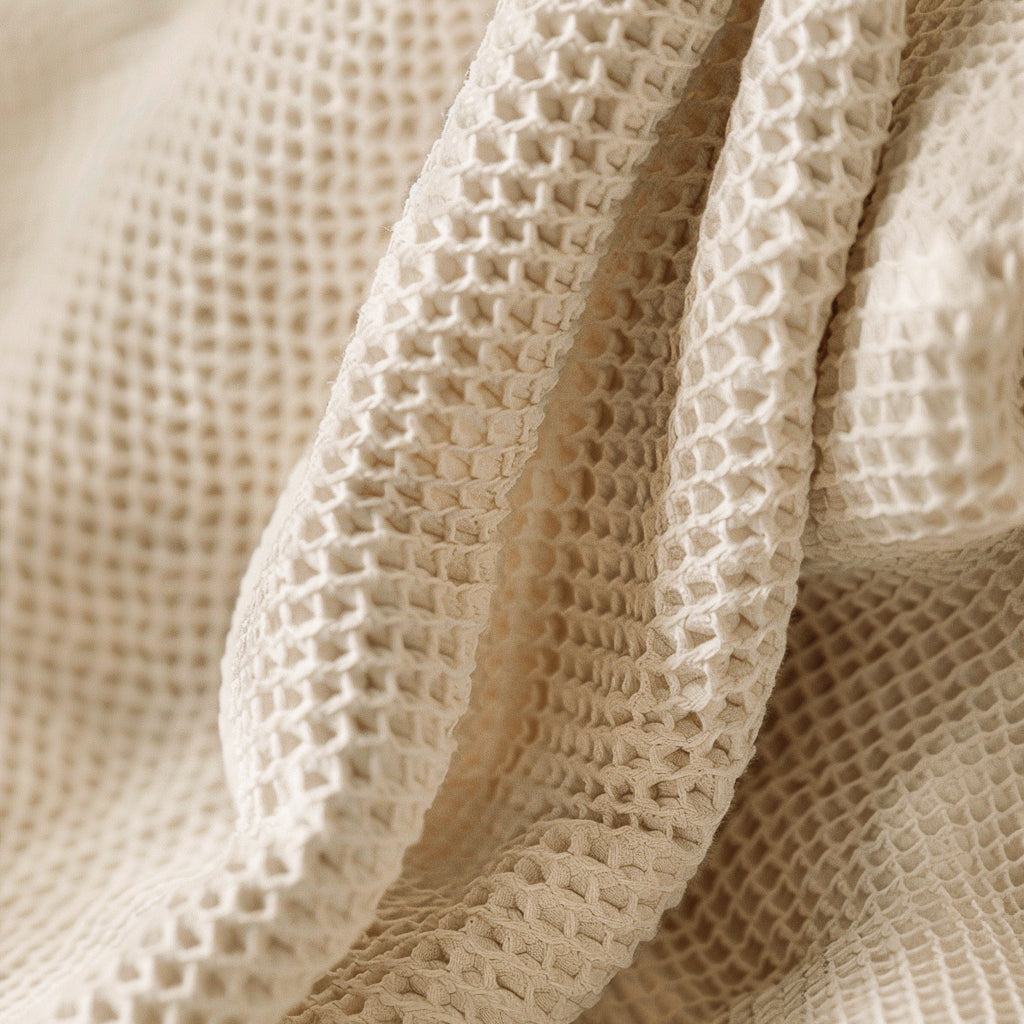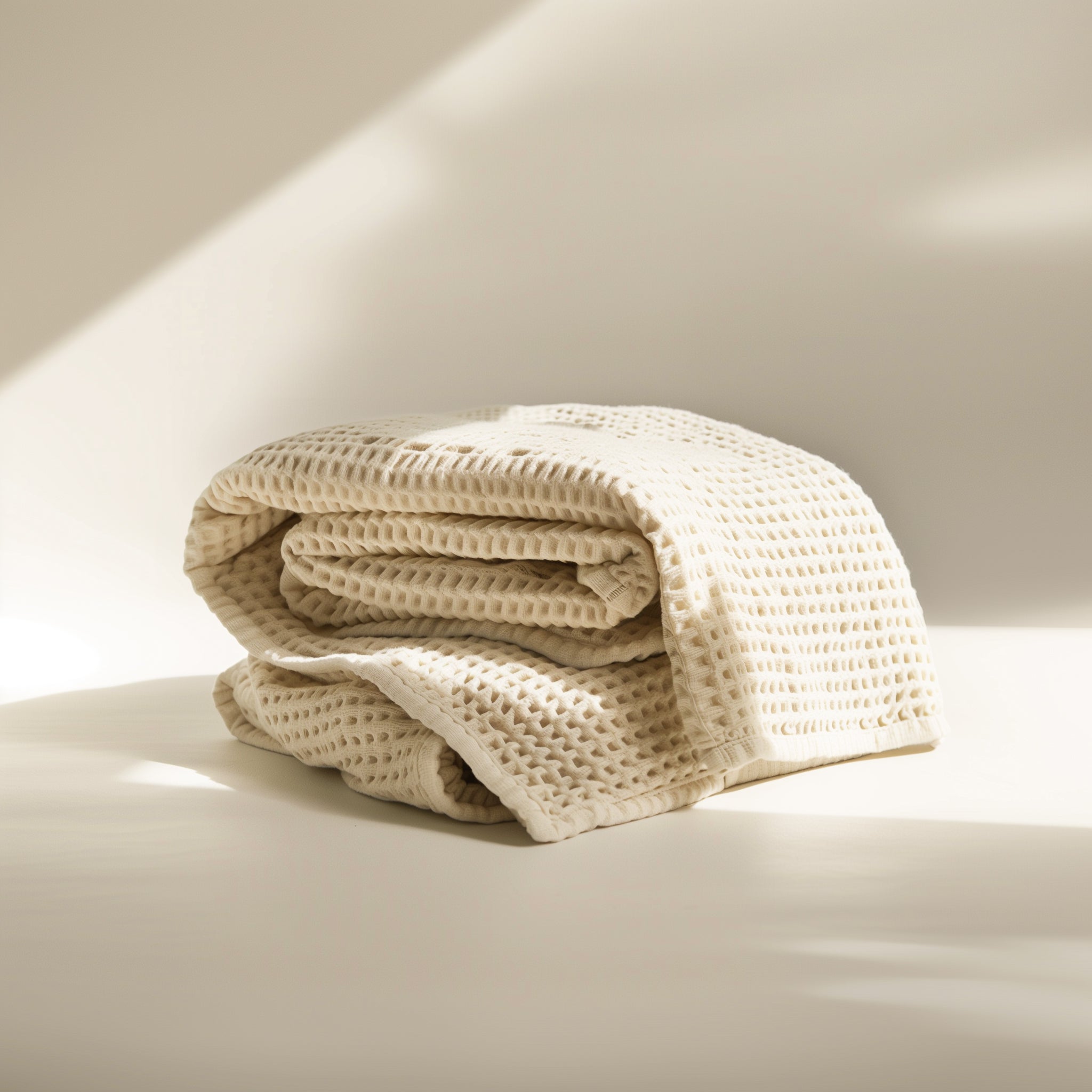In this article, we explore down vs. down alternative comforters. While one relies on bird feathers, the other offers cozy, cruelty-free comfort.
When it comes to creating the perfect sleep sanctuary, few choices matter more than your comforter. Traditional down has long been considered the gold standard for luxury bedding, harvested from the soft underfeathers of geese and ducks. But modern down alternatives have revolutionized the bedding industry, offering innovative synthetic fills that rival—and often surpass—the comfort of conventional down.
The decision between down and down alternative isn't just about comfort (though we'll certainly cover that). It's about understanding how your bedding choice impacts everything from your sleep quality to your environmental footprint. Whether you're a hot sleeper, allergy sufferer, or conscious consumer, knowing the key differences between these materials will help you make the best choice for your needs.
Let's explore the ins and outs of choosing between down vs. down alternative comforters.
What Is Down vs. Down Alternative?
Traditional Down
Down comes from the soft, fluffy undercoating of duck or goose feathers. The clusters of down create thousands of tiny air pockets that trap heat, making it naturally insulating. These feathers are harvested from birds, either as a byproduct of the meat industry or through live-plucking—a practice that raises significant ethical concerns.
Modern Down Alternative
Down alternative is a synthetic fill engineered to mimic the insulating properties of natural down, but without using any animal products. Typically made from premium polyester microfibers, these innovative materials are specifically designed to create the same lofty warmth as down while offering several distinct advantages: they're hypoallergenic, cruelty-free, and often better maintain their cloud-like shape over time.
The Dark Side of Down: Animal Welfare Concerns
The production of down raises serious ethical concerns that many consumers aren't aware of when purchasing their bedding.
While down may feel luxuriously soft, its sourcing often involves disturbing practices that harm birds:
Force Feeding: Many down-producing birds are subjected to gavage—a cruel force-feeding practice where metal tubes are inserted down birds' throats multiple times daily, pumping them with grain until their livers become diseased and enlarged. This practice is so inhumane it's been banned in several countries.
Live Plucking: Some birds are plucked alive to harvest their feathers, a painful process that's repeated every 6-7 weeks once their feathers regrow. Birds experience extreme stress and injury during plucking, yet are kept alive to produce more feathers.
Factory Farming Conditions: Even when birds aren't live-plucked (and are plucked after they're slaughtered) they're often raised in crowded, industrial conditions where they suffer from:
- Lack of space to move freely
- Inability to express natural behaviors
- Poor ventilation
- Stress and disease
- Rough handling
While some companies claim to source "ethical down," the complex supply chains make it difficult to verify these claims with certainty.
Down alternative fills offer a 100% cruelty-free solution that provides all the comfort without the ethical concerns. Modern synthetic fills are engineered to deliver cloud-like softness and excellent temperature regulation while ensuring no animals were harmed in the process.
Direct Comparisons Of Traditional vs. Synthetic Down
Let's compare these two options directly, head to head.
Warmth & Temperature Regulation
We’d say there's a tie here. Both materials excel at insulation, but in different ways:
- Down provides exceptional warmth-to-weight ratio and naturally adapts to body temperature
- Down alternative offers consistent warmth and often performs better in humid conditions where down can clump
For most sleepers, premium down alternatives now match or exceed down's temperature-regulating properties while avoiding the risk of clumping when exposed to moisture.
Allergies & Sensitivities
Down alternative is the clear winner here. Natural down can trigger allergic reactions and tends to trap dust mites, dander, and other allergens. Down alternatives are inherently hypoallergenic and resist dust mites, making down alternative comforters ideal for sensitive sleepers or anyone who wants a cleaner sleep environment.
Durability & Shape Retention
While quality down can last 10+ years with proper care, it requires significant maintenance to maintain its loft.
Modern down alternatives often outperform in shape retention:
- Significantly less likely to clump or shift
- Maintains consistent loft without regular fluffing or professional washing
- Bounces back better after washing
- Generally lasts 7-10 years with simple, basic care
Ease of Care
Down alternative takes the lead here:
- Machine washable at home
- Quick drying time
- No special cleaning requirements
- Maintains loft after washing
Down, meanwhile, typically requires:
- Professional cleaning (a few times a year)
- Special detergents
- Careful drying procedures
- Regular maintenance to prevent clumping
The Clumping Conundrum: Down vs. Down Alternative
Let's talk about one of the most frustrating issues sleepers face with their comforters: clumping. Anyone who has purchased a cloud-like down comforter only to find that after a few washes or seasons the down has flattened and migrated into corners of the baffle boxes knows this frustrating issue. What was once a luxuriously fluffy comforter becomes an uneven disappointment.
Here’s Why Down Clumps
Traditional down is particularly prone to clumping, especially when exposed to moisture. (If where you live is particularly humid, listen up!)
Here's what happens:
- Moisture from humidity, sweat, or washing causes down clusters to stick together
- Once clumped, down loses its ability to trap air effectively
- Clumps create cold spots where insulation is compromised
- Restoring even distribution often requires professional cleaning
How Down Alternative Stays Lofty
Modern down alternatives are engineered specifically to solve the clumping problem:
- Synthetic fibers resist moisture and maintain their structure
- Fill stays evenly distributed throughout the comforter
- When compressed, fibers bounce back to their original shape
- Regular washing actually helps maintain, rather than harm, the fill's distribution
This is where premium down alternatives like organic favorite's comforter really shine.
Our innovative synthetic fill maintains its cloud-like loft even after repeated washing and regular use. No more morning battles with lumpy bedding or constant refluffing to maintain comfort.
Environmental Impact & Cost Considerations
We can't talk about down without talking about the cost and environmental impact.
Environmental Impact
While traditional down comes from natural sources, the environmental equation isn't as simple as it might seem:
- Down is a by-product of the meat industry
- Processing and cleaning natural down requires significant water usage
- Transportation and specialized cleaning services add to carbon footprint
Modern down alternatives are evolving to meet environmental challenges:
- Innovative synthetic fills increasingly use recycled materials
- Machine washable at home reduces water and energy usage
- Longer-lasting loft means less frequent replacement
- ZERO animal welfare concerns (we love this)
The Real Cost Comparison
Initial Investment:
- Premium down comforters: $300-1000+
- Quality down alternatives: $150-400
Hidden Costs of Down:
- Professional cleaning ($50-100 per service)
- Special storage solutions (for humid areas especially)
- Replacement costs when clumping becomes unmanageable
Long-term Value of Down Alternative:
- Machine washable (saves cleaning costs)
- Maintains performance longer
- No specialized storage needed
- More consistent comfort over time
Understanding Weight & Value: GSM Guide
When shopping for comforters, GSM (grams per square meter) indicates warmth level. Here's how different weights work for different needs:
GSM Breakdown
- 300-400 GSM: Perfect all-season weight for most sleepers
- 400-500 GSM: Ideal for cold sleepers or chilly climates
- 500+ GSM: Extra warm for winter or very cold sleepers
Cost Comparison
Down Comforters:
- All-Season (300-400 GSM): $300-700
- Winter Weight (400+ GSM): $700-1000+
Down Alternative:
- All-Season (300-400 GSM): $150-300
- Winter Weight (400+ GSM): $300-400
This shows one of down alternative's biggest advantages: you can get premium all-season comfort at less than half the price of traditional down.
Who Should Choose What: A Practical Guide
Down Alternative Is Ideal For:
- Allergy Sufferers & Sensitive Sleepers Stay comfortable without worrying about dust mites or allergens
- Ethical Consumers Get cloud-like comfort without animal welfare concerns
- Practical Caretakers Enjoy easy machine washing and minimal maintenance
- Value Seekers Get premium comfort and durability at a better price point
- Hot or Variable Sleepers Experience consistent temperature regulation without clumping
- Anyone Who Values Reliability No more dealing with shifting fill or cold spots
Traditional Down Might Be Right For:
- Lightweight Warmth Seekers Experience the uniquely ethereal feel of natural down's warmth-to-weight ratio
- Temperature-Sensitive Sleepers Benefit from down's natural ability to adapt to body temperature changes
- Luxury Bedding Collectors Enjoy the prestige and traditional craftsmanship of premium down products
- Frequent Travelers Take advantage of down's superior compression abilities for storage and travel
So, Who Wins the Battle?
At organic favorite, it’s important that our offerings are vegan, organic, and ethical. This is why we offer a premium Organic Down Alternative Comforter. Everyone wants a cloud-like, cozy bedscape, but we can’t justify the animal products used in traditional down. For many consumers, traditional down is also hard work to maintain its "at purchase" fluff.
Our premium Organic Down Alternative Comforter offers:
- Premium synthetic fill that maintains its loft
- All-season 300 GSM weight
- Certified GOTs organic cotton sateen shell
- Hypoallergenic comfort
- Easy care & durability
- Cruelty-free & vegan materials
- Excellent value for the quality

